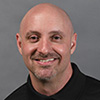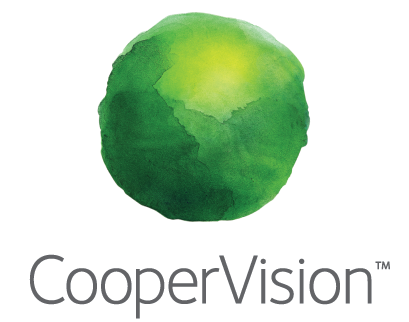

Next Week: SNAPP at SECO

By Lisa Hamilton, OD, SNAPP Board Member
Creating more interaction year-round…
SNAPP is once again partnering with SECO to bring members another great meeting experience!
Our two annual meetings are excellent opportunities for networking and garnering new ideas we can bring back to our eye care centers. And, in 2020, we’re building an even stronger network for all types of affiliates!
There’s still time to register for the SNAPP meeting in Atlanta, March 4-6. Not only will you earn valuable continuing education, but it’s a great opportunity to hear from others about ideas that work in their locations. In fact, our SNAPP Member Think Tank-Idea Contest is one of the highlights of the entire meeting. This year, we’ll hear ideas from eight SNAPP members who have increased sales, improved retention, patient satisfaction and MORE!
In addition, Meet Your Fellow Operators will offer a chance to discuss what keeps us (all) awake at night and how we’re dealing with these challenges. Finally, the CE and practice management sessions are presented by first-rate speakers who will keep us updated on the latest developments and trends.
We are very excited to announce the SNAPP Board is forming three expert panels of SNAPP members who will test equipment, products and protocols; report findings; and make recommendations to the entire group. OD panels include one on ocular surface disease and the second on retina/age-related macular degeneration issues. The panel for non-OD LOs will involve safety eyewear. SNAPP Members Theresa Ayers and Gary Tonsager have already volunteered to be on that panel, and we’re still looking for others. Anyone interested in participating can email me at drhamilton@snappgroup.com.
On behalf of the entire board, I look forward to seeing you at SNAPP 2020 Atlanta!

SNAPP National Meeting Highlights
The SNAPP team has planned full schedule with a range of topics so you can find what find out more about what you want to learn. Here are just a few of the sessions you will be able to attend at SECO in Atlanta.
Workplace Dynamics: Constructive Criticism Doesn’t Cut It | CE COPE/ABO | Charlie Sacarelli
Telemedicine in the Practice of Tomorrow | CE COPE/ABO | Anthony Cavallerano, OD
Practice Management: Don’t Let RXs Walk Out the Door | CE ABO/COPE | Rebecca Johnson
Clinical Doctor Program: Marc Myers Posterior Segment Grand Rounds | COPE | Andy Gurwood, OD, FAAO
Practice Management: Mythbusters in Myopia | April Jasper, OD, FAAO
Here’s the full agenda and registration information to help you plan your meeting experience.

Why Every Practitioner and Parent Needs to Be Concerned About Myopia

By Leah Johnson, OD, FAAO, Director, Global Professional Services at Paragon Vision Sciences
Myopia is more than an inconvenience. Studies show that myopia impacts a child’s ability to learn and self-esteem. In addition to a decreased quality of life, there are numerous peer-reviewed publications documenting increased risks associated with high levels of myopia due to axial length elongation.1 These risks include retinal detachment, early onset of cataracts, glaucoma and myopic macular degeneration. The incidence and prevalence of myopia is increasing. According to the American Optometric Association, in the U.S., the prevalence of myopia in children 12-17 is 34% amounting to over 9 million children and increasing due to changes in lifestyle of increased digital screen time and less outdoor time.2,3 As clinicians, we want to not only correct a child’s vision, but to offer evidence-based treatments to slow down myopic progression and enhance their quality of life.4
Orthokeratology (Ortho-K): This innovative treatment option employs contact lenses that are specially designed to correct the curvature of the cornea overnight while the patient sleeps. In the morning when the lenses are removed, patients have clear vision and experience freedom from glasses and daytime contacts. Under CooperVision Specialty EyeCare, Paragon CRT® contact lenses are FDA approved for correction of myopia and recognized globally for their safety and efficacy. Ortho-K lenses like Paragon CRT® have also been shown in clinical studies to improve quality of life in children.4 This profound impact includes enhanced self-esteem, social skills, improved classroom performance and greater participation in sports.5
MiSight: CooperVision’s Brilliant Futures™ Myopia Management Program seeks to create a new standard of care for children with progressive myopia. Based on a comprehensive treatment plan that features CooperVision MiSight® 1 day contact lenses, it provides inclusive practice, child and parent support. The result is the optimal environment for compliance, satisfaction, clinical outcomes and long-term loyalty. CooperVision MiSight® 1 day lenses are the first and only U.S. Food and Drug Administration-approved product6 clinically proven to slow the progression of myopia when initially prescribed for children 8-12 years old* in the U.S. Brilliant Futures™ with MiSight® 1 day will be available in March 2020.
Atropine: Atropine is a pharmaceutical intervention with a dose-response relationship in regards to effectiveness of slowing down progression7. 1% atropine is very potent to slow down myopia progression, however there are many side effects including dry mouth and increased heart-rate.8 Recent studies have looked at the efficacy of lower dosages of atropine.7 As a pharmaceutical option, it does not correct vision and the child will still need to wear glasses or contacts. It is also important to note is that lower dosages of atropine are not readily available by pharmaceutical companies and will need to be compounded by a local pharmacy.
References:
1. Flitcroft, DI. The complex interactions of retinal, optical, and environmental factors in myopia aetiology. Progress in Retinal and Eye Research 31(2012) 622-660.
2. American Optometric Association, 2019.
3. American’s Children: Key National Indicators of Well-Being, 2019. www.childstats.gov.
4. Walline JJ, et al. Interventions to slow progression of myopia in children. Cochrane Database of Systematic Reviews 2020, Issue 1.
5. McAlinden, C, Lipson, MJ, et al. Orthokeratology and Contact Lens Quality of Life Questionnaire. Eye Contact Lens. 2018 Sept; 44(5): 279-285.
6. Chamberlain P, et al. Clinical evaluation of a dual-focus myopia control 1 day soft contact lens. 3-year results (2016 American Academy of Optometry Annual Meeting) and 5-year results (2019 BCLA Clinical Conference & Exhibition).
7. Yam, JC, et al. Low Concentrations Atropine for Myopia Progression (LAMP) study: A randomized, double-blinded, placebo-controlled trial of 0.05%, 0.025%, and 0.01% Atropine Eye Drops in Myopia Control. Ophthalmology. March 2018: 1-12.
8. Chua, et al. “Atropine for the treatment of childhood myopia” Ophthalmology. 2006 Dec;113(12):2285-91. Epub 2006 Sep 25.

A Successful Optometric Practice’s Secret To Making Fewer Billing Mistakes

By Shane Shepherd, Sr. Insurance Sales Manager, VisionWeb
Some optometric practices seem to have no problem managing their insurance claims and maximizing their claim reimbursements. However, most practices aren’t leveraging their strategies for reducing billing errors and making more money from claim reimbursements.
Here are some of the strategies that a successful optometric practice utilizes to increase revenue from their insurance claims.
Use a clearinghouse solution.
Duplicate data entry, switching between payer sites and calling individual payers create a lot of extra work that complicates the claims management process, which can create costly errors. Successful billing managers take advantage of a complete clearinghouse solution to gain access to thousands of payers from a single location.
Pull benefits early
There are many reasons why a payer will deny a claim. Fortunately, most of these reasons can be avoided just by pulling the patient’s eligibility earlier.
Pulling patient benefits early using your clearinghouse solution or practice management software can give you insights into the patient’s full coverage information and will help you reduce common rejection reasons. Common claim rejection and denial reasons avoided by pulling patient benefits early include the following.
• The payer doesn’t cover the services
• The patient is uninsured
• The patient’s coverage has been terminated
• The payer doesn’t support the frequency of services
Review reports
Running and reviewing your claims management reports will help you make decisions that will earn you more money from your claim reimbursements. Successful optometric practices owners know that if they want to improve, they have to stay on top of their reports to ensure that they aren’t below industry averages. With reports, you can identify your practice’s common claim denial reasons so you can address and avoid them in the future. Here are some of the common reports a successful optometric practice will run for its claims management efforts.
• Claim acceptance duration
• Monthly denial rate
• Monthly income comparison
Leverage revenue cycle management services
Managing a high volume of claims in your optometric practice is challenging. The claims lifecycle is complex, and with the other challenges of managing a successful optometric practice, managing claims effectively can seem impossible.
Many successful optometric practices leverage the help of a revenue cycle management service to file claims, work rejections and track metrics so they can shift their focus to delivering quality care and achieving patient satisfaction.
Read “The Definitive Guide to Making More Money on Claim Reimbursements” for more tips on how you can increase profits from your claims.

Be Specific With Employee Expectations
Tip of the Month from AmCheck
Employee turnover is more expensive than people think. On average, employers spend $4,129 per hire. Depending on the role you’re filling, some of these costs can be tracked and calculated, but others are harder to gauge, like the impact on employee engagement. This infographic gives you the statistics on turnover with some practical tips to encourage retention—the easiest way to cut turnover costs.






